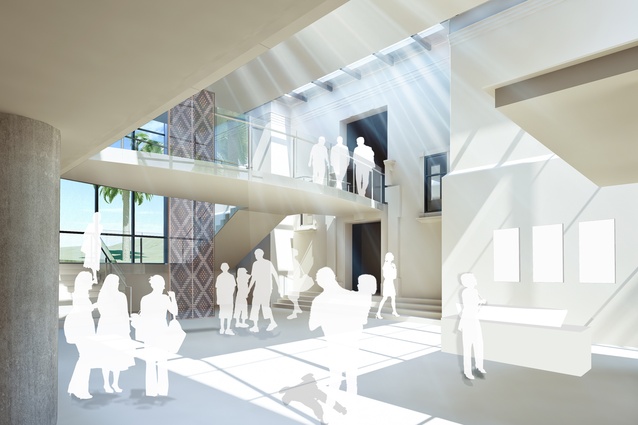Whanganui’s Sarjeant Gallery
Whanganui’s Sarjeant Gallery, one of the country’s most important heritage buildings, has been given a much longer lease of life. The estimated $32.45 million earthquake-strengthening and extension project for the gallery was granted resource consent following the hearing on 14 July in Wellington.
Principal of Warren and Mahoney Roy Wilson says the architectural firm is excited that the resource consent has passed with all submitters very positive about the restoration of the building and the addition of a new wing.
“We are just delighted to get it – having been involved in the design originally for the competition and now in getting it built.”
Warren and Mahoney won a competition for the redevelopment in 1999 and Wilson says the original design has changed little. Some of the internal planning has been altered to meet today’s needs for educational facilities and technology.
The cruciform, neo-classical style building, designed by architect Donald Hosie, opened in 1919. Wilson says all the additions and alterations made to the building will be stripped back to the original, the wooden floors fully restored and the dome accentuated.
“The historic building will be seismically strengthened with base isolators and new in-situ concrete walls will lock the external Oamaru stone wall facings together, returning the building to its original form.”
The modern, north facing extension is designed to be compatible with the old building by maintaining proportions, scale, height, materials and colour, resulting in a neutral addition, which is not visible from the central city and does not compete with the historic building.
“By glazing the ground floor and separating the upper level from its base, the ‘solid’ gallery element appears to float.”
The extension connects lightly with the original building through a fully glazed entry foyer and bridge that provides visual links to activity spaces on the ground floor of the new building as well as to the gallery spaces. The ground floor that includes shop and café, auditorium and a function room, gallery facilities, toilets, storerooms and offices, will offer views of Mt Ruapehu.
The first floor gallery space comprises a large gallery (half of the new wing) along with three smaller galleries and an educational room.
The redevelopment will triple the size of the existing building and give the Sarjeant the amenities of a major, modern gallery: conservation and photographic facilities, carpenters shop, and essential storage for the gallery’s considerable collection in a temperature and humidity controlled environment.
The construction phase will take up to two years and will commence in about 12 months time Wilson says.
The government is contributing one third of the cost, the Whanganui District Council one million dollars with the rest is being raised through fundraising.
“The target is to have the building opened and to celebrate a number of things – the end of WW1 when the gallery was opened, the architect, Hosie, who died during WW1 and the planting of some victory oaks around [the gallery]. We are well through the documentation and we are just awaiting instruction to proceed.”











